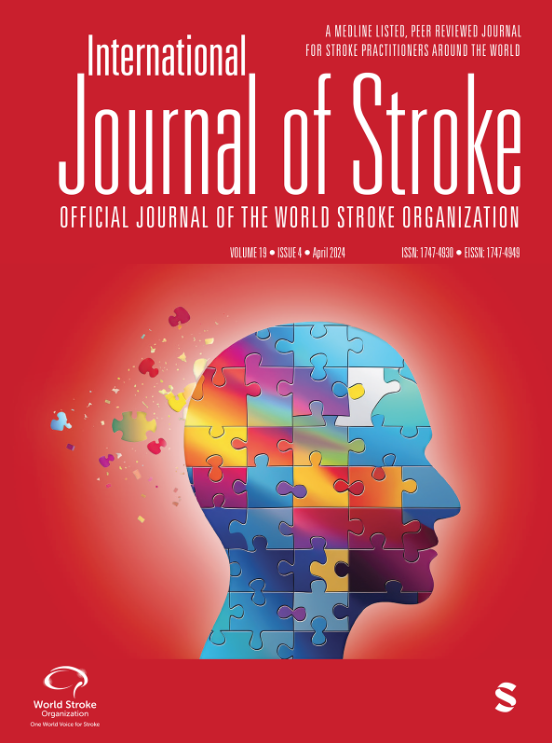Comparative study of venous thromboembolic prophylaxis strategies in hemorrhagic stroke: a systematic review and network meta-analysis
IF 6.3
2区 医学
Q1 CLINICAL NEUROLOGY
引用次数: 0
Abstract
Background:Venous thromboembolic events, including deep vein thrombosis (DVT) and pulmonary embolism (PE), are frequent complications in patients with intracerebral hemorrhage (ICH). Various prophylactic strategies have been employed to mitigate this risk, such as heparin, intermittent pneumatic compression (IPC), and graduated compression stockings (GCS). The optimal thromboembolic prophylaxis approach remains uncertain due to the lack of randomized controlled trials (RCTs) comparing all interventions.Aims:We conducted a network meta-analysis and meta-analysis to systematically review and synthesize evidence from RCTs and non-randomized studies on the efficacy and safety of thromboembolic prophylaxis strategies in hospitalized ICH patients.Summary of findings:Our study followed registered protocol (PROSPERO CRD42023489217) and PRISMA guidelines incorporating the extension for network meta-analyses. Search for eligible studies was performed up to December 2023. We considered the occurrence of DVT, PE, hematoma expansion (HE), and all-cause mortality as outcome measures. A total of 16 studies, including 7 RCTs and 9 non-randomized studies, were included in the analysis. Network meta-analysis revealed that IPC demonstrated the highest efficacy in reducing DVT incidence (OR 0.30, 95% CI 0.08-1.16), particularly considering only RCTs (OR 0.33, 95% CI 0.16-0.67). GCS showed the highest safety profile for HE (OR 0.67, 95% CI 0.14-3.13), but without efficacy. Chemoprophylaxis did not reduce the risk of PE events (OR 1.10, 95% CI 0.17-7.19) with a higher occurrence of HE (OR 1.33, 95% CI 0.60-2.96), but the differences were not significant.Conclusion:Our study supports the use of IPC as the primary thromboembolic prophylaxis measure in ICH patients. Further research, including head-to-head RCTs, is needed to strengthen the evidence base and optimize clinical decision-making for thromboembolic prophylaxis in this vulnerable patient population.出血性脑卒中静脉血栓栓塞预防策略的比较研究:系统综述和网络荟萃分析
背景:静脉血栓栓塞事件,包括深静脉血栓形成(DVT)和肺栓塞(PE),是脑内出血(ICH)患者的常见并发症。为了降低这种风险,人们采用了各种预防策略,如肝素、间歇性气压疗法(IPC)和渐进式压力袜(GCS)。目的:我们进行了一项网络荟萃分析和荟萃分析,系统地回顾和综合了有关住院 ICH 患者血栓栓塞预防策略的有效性和安全性的 RCT 和非随机研究的证据。研究结果摘要:我们的研究遵循了注册协议(PROSPERO CRD42023489217)和PRISMA指南,并纳入了网络荟萃分析的扩展内容。对符合条件的研究的搜索截止到 2023 年 12 月。我们将 DVT、PE、血肿扩大(HE)的发生率和全因死亡率作为结局指标。共有 16 项研究被纳入分析,其中包括 7 项研究性临床试验和 9 项非随机研究。网络荟萃分析表明,IPC 在降低深静脉血栓发生率方面表现出最高的疗效(OR 0.30,95% CI 0.08-1.16),尤其是仅考虑 RCT(OR 0.33,95% CI 0.16-0.67)。GCS 对 HE 的安全性最高(OR 0.67,95% CI 0.14-3.13),但没有疗效。化学预防并未降低 PE 事件的风险(OR 1.10,95% CI 0.17-7.19),但 HE 的发生率更高(OR 1.33,95% CI 0.60-2.96),但差异不显著。还需要进一步的研究,包括头对头的 RCT 研究,以加强证据基础,优化这一易受影响患者群体的血栓栓塞预防临床决策。
本文章由计算机程序翻译,如有差异,请以英文原文为准。
求助全文
约1分钟内获得全文
求助全文
来源期刊

International Journal of Stroke
医学-外周血管病
CiteScore
13.90
自引率
6.00%
发文量
132
审稿时长
6-12 weeks
期刊介绍:
The International Journal of Stroke is a welcome addition to the international stroke journal landscape in that it concentrates on the clinical aspects of stroke with basic science contributions in areas of clinical interest. Reviews of current topics are broadly based to encompass not only recent advances of global interest but also those which may be more important in certain regions and the journal regularly features items of news interest from all parts of the world. To facilitate the international nature of the journal, our Associate Editors from Europe, Asia, North America and South America coordinate segments of the journal.
 求助内容:
求助内容: 应助结果提醒方式:
应助结果提醒方式:


